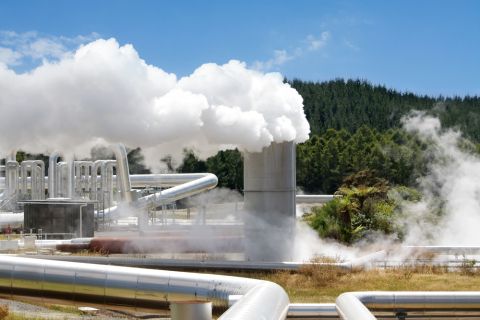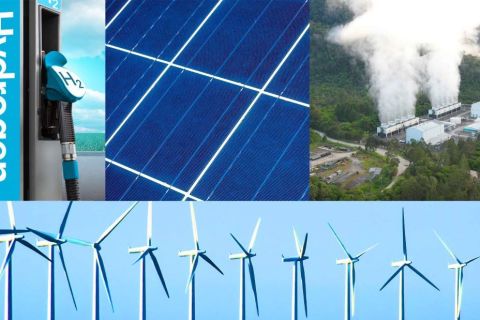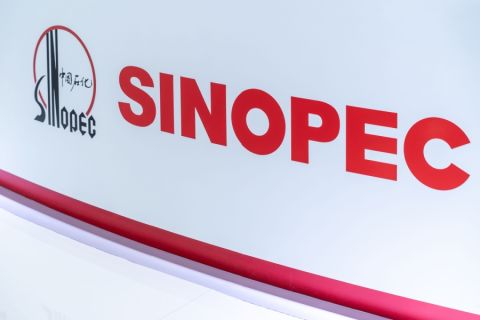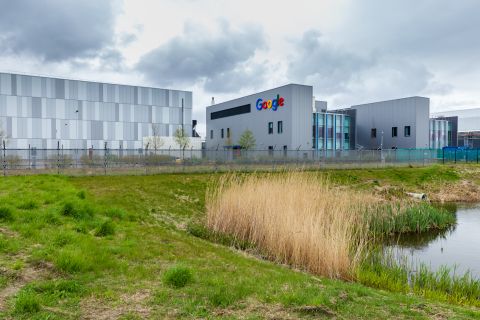
OSLO, Norway—Although Aker BP is one of the new kids on the block when it comes to operators, having been formed in 2015, they are one of the most progressive companies in the sector. When Karl Johnny Hersvik joined the company as CEO in 2014, there were about 380 employees, with 1,200 barrels of production. Today the company has approximately 1,700 employees, about 160,000 of equity production, operating 320,000 barrels of oil equivalence and five operating hubs across the Norwegian Continental Shelf.
“We're growing almost like a tech start-up,” Hersvik says. “Two orders of magnitude in production and one order of magnitude in employees over four years. It's a quite atypical oil and gas company.” Aside from that unique growth model, the other standout characteristic is that they operate almost all of their production above 99%. This allows them to shape their own desired strategy.
Eliminating Waste
But that does not paint the entire picture. According to Hersvik, there is a third trait that shapes the company’s strategy. “We are probably the only oil and gas company, at least in Europe, that is really running a digital transformation agenda,” he said.
The mantra for this transformation is to execute, improve, and grow. “If you can't put it into one of those three boxes, we try not to do it,” he continued.
Under the improve category the focus is on examining the entire value chain from the start of the well right through to decommissioning. “We came to the realization that there were several sources of waste in that value chain,” Hersvik said.
The first one was around how the value chain was organized. It is a series of agreements that run from early phase development, right through to operations. That could be up to six to 10 discrete purchasing handovers in that period. To increase the efficiency, Aker BP sought inspiration from how the Asian carmakers construct their value chains via a series of partnerships, alliances and building long-term relationships between customers and vendors.
The other waste was time; how to compress the time it takes from the task to be initiated to when it is completed. “Rather than ask, 'how much resources are you spending executing that task? We asked, ‘how do you minimize the time?’,” he said. “Flow efficiency became a key priority. Then we started looking at other industries that had implemented the same kind of philosophies.”
The search took Aker BP outside of the oil and gas sector, again to the automotive industry, ad the concept of lean production. “The principles in lean with Aker BP is all about visual management,” Hersvik said. “We talked about flow efficiency over resource efficiency, and we tried to minimize the time it takes to make decisions.”
Driving The Digital Agenda
Then it was time to start thinking about digitalization. “By digitalization, I mean that we're deconstructing and reconstructing the value chain using digital technologies,” he explained. “If you look across all the industries, they have one critical criterion, they're removing waste. There is a link between digitalization and reducing lead time. We quickly concluded that this didn’t work within a conventional organization with powerful functions, steering committees and massive bureaucracies that slowed the operations. We needed to find other ways of dealing with it, more speed, so we started talking about autonomous teams.
“We've been experimenting with this, trying to move the industry from a risk-management industry over to margin-management industry. I'm not going to say that we're there, but we started to do this.”
Hand-in-hand with digitization is a drive to implement remote operations, something that Hersvik believes is critical. “It’s simple,” he said. “We are trying to remove humans from dangerous facilities and operations as much as possible and control it from a safe location. Onshore we will have the control room in the same location as you have the engineering support.
RELATED ARTICLE: How Wind-For-Oil Can Be An Alternative To Shore-Based Electrification
“If you have an engineering problem, you go into the control room. You talk to the control room operators and implement the new solution in the plant. It can be achieved in minutes, rather than having to travel out to the facility and take days. Put humans in the places where they can contribute as much value as possible and remove them from where they are not contributing to value.”
Setting The Data Free
The crux of many of these ambitions is data. The ability to access it from anywhere no matter what system it is running on. If they could achieve that they could begin to extract real value from the data that is currently locked in silos throughout the operation. “We needed to find a way of actually getting data to flow,” Hersvik added.
To move down this path Aker BP began collaboration with Cognite, utilizing their data platform Cognite Data Fusion (CDF) product. “This gives us an ability to access 3D models, time series data, piping and information diagrams (P&IDs), and documents, regardless of the source system and regardless of the access point,” Hersvik said. “Now, you’re talking about data utilization, we also call it data liberation. This is a key criterion; it sounds simple, but if you don't have data flowing for your systems, you can forget about automation.”
Hersvik admits they made some mistakes when they first started their digital journey by rushing to hire data scientists, software programmers, and software architects to construct some apps that would solve most of our problems. “This is fine and can be done,” he said. “The problem is that an oil and gas company will have hundreds if not thousands of data sources. Most of what's being done in the industry is a few of these data sources are coupled to an end-user application; you have a point-to-point connection but no data liberation, no data flowing across. After spending a bit of time trying to understand what was really driving this industrial IoT revolution, we concluded that the most important thing was to get the data to flow.”
Getting Value From Data Flow
By using CDF, Aker BP can tap directly into the data, but without having to relate to the source systems. “Now, we can do interesting things,” Hersvik said. “This this what we mean by data liberation. It came out to a straightforward statement where we said, all data either construed or created by Aker BP should be available to any user on any device with very low latency. This is an easy statement to make when you think about things like the 3-D models for Ivar Aasen that are about 16 GB. CDF allows us to do this because of this data now being uniquely contextual in a so-called tach hierarchy.
RELATED ARTICLE: Subsea Production Receives Boost With Innovative Multiphase Pump
Within a tach hierarchy, every piece of equipment on and offshore has a unique tag number. That tag number carries properties, documents, and 3-D geospatial information. Any operator with a handheld device can read the tag number and obtain all the time series data including documentation and P&IDs. “All this information is on different systems, but it's all available to him on the device because it's flowing up,” Hersvik said. “This is one experiment on the road to the field of the future.
“What we're trying to do while we're operating the assets to the best of our ability, is to impact as much change as we possibly can along with digitalization, flow efficiency, flexible organization and reconstruction of the value chains. All driven by a desire to construct the field of the future with minimal degrees of emission, high degrees of automation, and as future fit as we possibly can.”
Recommended Reading
Devon Energy Leads $244MM Funding Round for Fervo Energy
2024-02-29 - The funds will finance Fervo Energy’s next phase of growth as it puts to use oil and gas technology and techniques to scale geothermal energy.
US Geothermal Sector Gears Up for Commercial Liftoff
2024-04-17 - Experts from the U.S. Department of Energy discuss geothermal energy’s potential following the release of the liftoff report.
Energy Transition in Motion (Week of March 1, 2024)
2024-03-01 - Here is a look at some of this week’s renewable energy news, including Chevron’s plans for a solar-to-hydrogen facility in California.
Sinopec Completes Drilling of China’s Deepest Geothermal Well
2024-04-11 - Sinopec said the Fushen-1 Well was drilled to a depth of 5,200 meters.
Google Exec: More Collaboration Needed for Clean Power
2024-04-17 - Tech giant Google has partnered with its peers and several renewable energy companies, including startups, to ramp up the presence of renewables on the grid.






